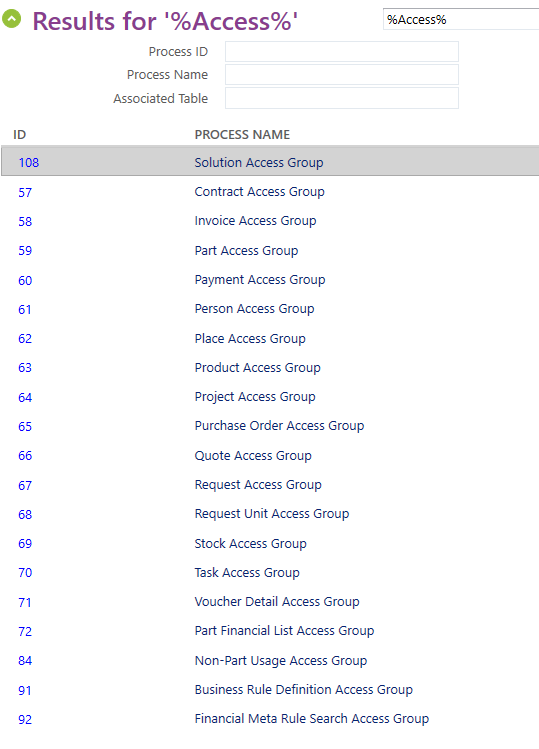Hi,
On the Business rule transaction, if we make a search with %Access% (see below), it seems that we don’t have standard rule for access_group and RMA.
1/ is it correct ? are Request/RMA stored in the same table and the rule 67 works for both RMA and Request ?
Going Forward, in the RMA transaction (Detail tab) it seems that we don’t have a field access group like we have in a request. is it correct ?
2/ Could you tell us why we don’ have this field in the main/detail tab in the RMA (like we have for ECO or Request) ?
3/ On the RMA transaction, it seems that “RMA type” is linked to the global table “Req_type” . if it’s correct ? if yes, How can we filter this table in the RMA screen to only display “Req_type” that are relevant for RMA.
A RMA could be created without a previous request (if the customer make a return directly in the repair center) and in an organization, we could have some repair centers. According to this organization we need to separate data by access group for all repair centers.
For Example : if we have 2 Repair centers (North/South) . A repair center located in the south of a country don’t want to see RMA for Customers/sites linked or located to the North because it’s not relevant for this one.

Thanks for your feedback
Regards




